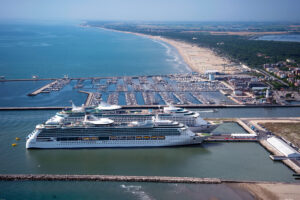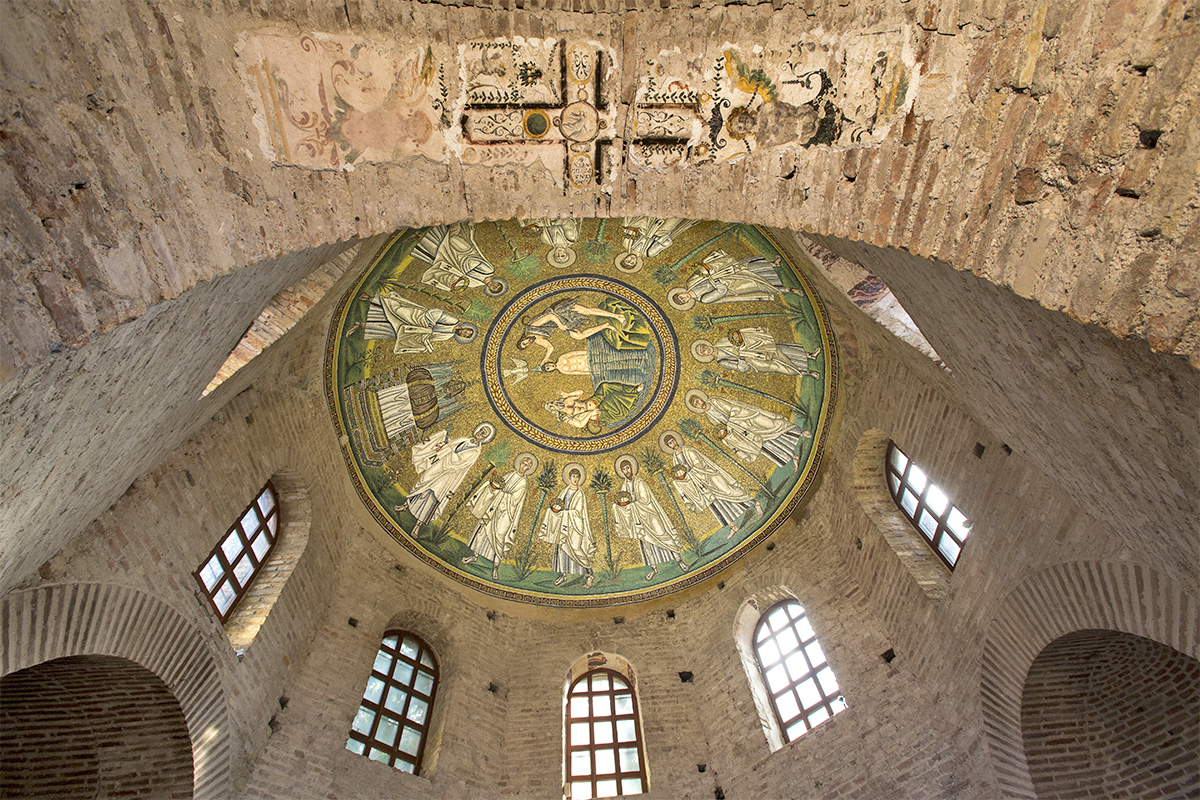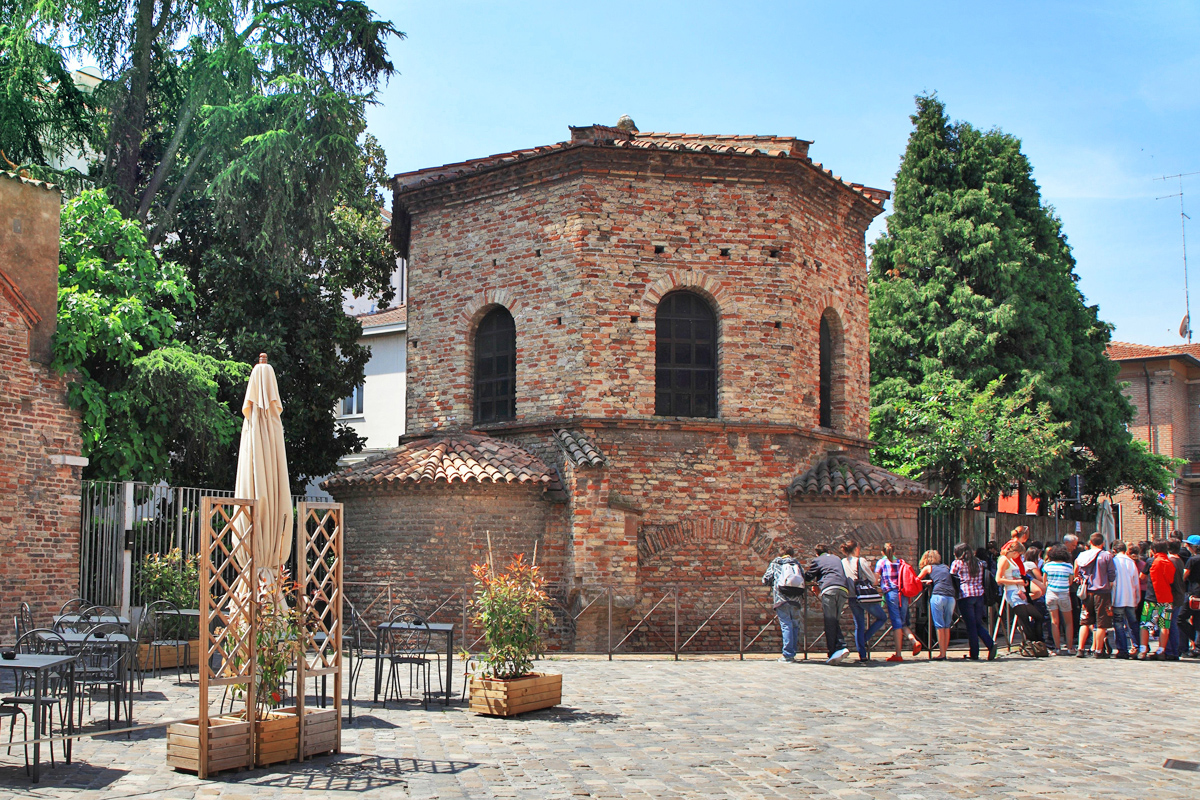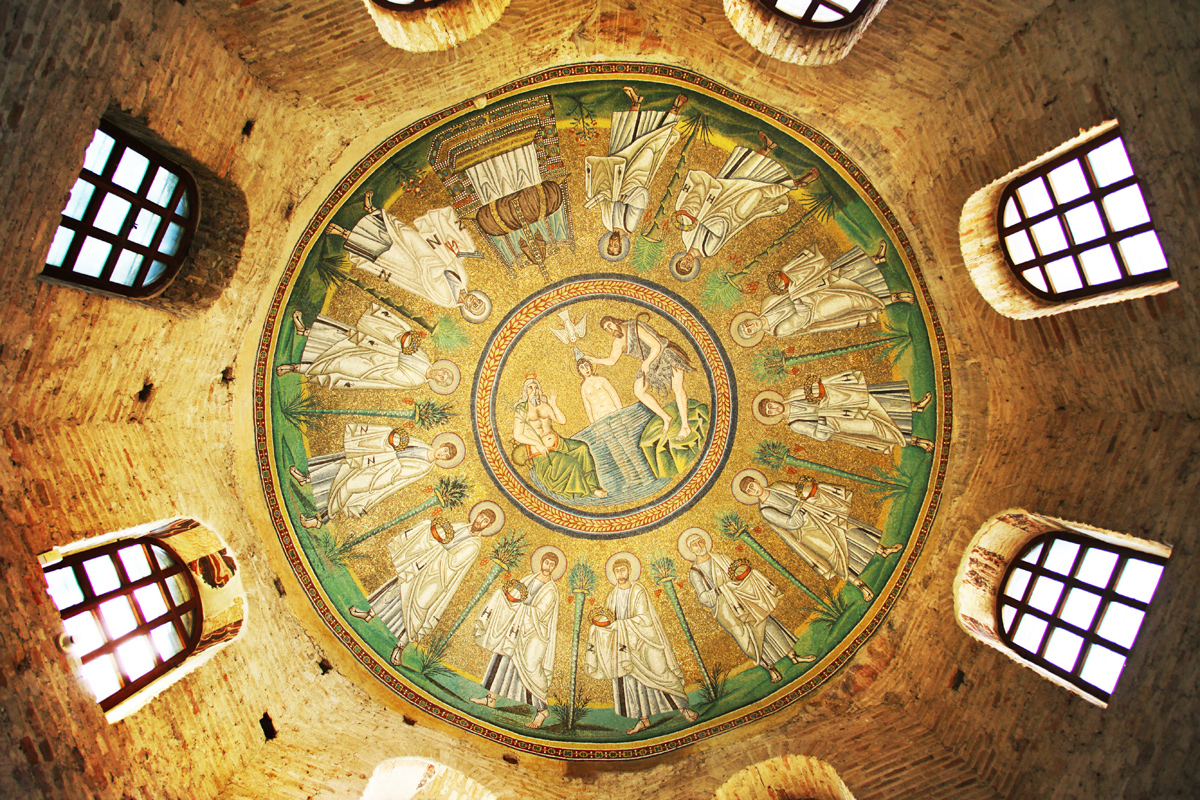Not far from the railway station of Ravenna, in a little piazza paved with sampietrini, stands the ARIAN BAPTISTERY, UNESCO World Heritage Monument since 1996.
A bit of history
It was presumably built by king Theodoric at the end of the 5th century AD, when Arianism was the court’s official religion. Originally, it had to serve as a complementary building of the nearby Arian Cathedral.
Halfway through the 6th century AD, the baptistery was consecrated to the Orthodox worship at the behest of Justinian and became an oratory dedicated to the Virgin Mary.
Later, during the 13th century, the Benedictine monks took care of it and handed it over to the clergy.
At the end of the 19th century it became an integral part of the new Oratorio della Confraternita della Croce (17th century) and it was then sold to private owners, at risk of becoming a warehouse.
In 1914 it finally became a State heritage site and its structure and the mosaics of the dome underwent restoration works.
A dome with golden mosaics
Nestled amidst the buildings of the historic centre, it is hard to picture the Arian Baptistery in its original splendour.
It had to look far more imposing, almost 3 metres higher (today the floor is underground, and a system of waterways controls and prevents new floodings).
Today, it is possible to see just small rebuilt sections of the original ambulatory (annular corridor), which recall its connection with the ancient Arian Cathedral, today Chiesa di Santo Spirito (Church of the Holy Spirit).
Almost nothing remains of the original stuccoes and decorations that surely embellished the walls.
The only exception is the mosaic decoration of the dome depicting the baptism of Christ, an image present also in the Neonian (or Orthodox) Baptistery.
Whilst it features the same iconographic design as the Neonian Baptistery, from which it took inspiration, the mosaic decoration of the Arian Baptistery witnesses the religion of Theodoric’s court, based on the both earthly and divine figure of Christ.
In the central clypeus, a young and naked Christ stands immersed in the water up to his hips.
The external concentric band depicts the twelve apostles walking towards a majestic gemmed throne crested by a cross; a purple coat hangs from the cross’ arms, symbol of the bodily nature and human suffering of Christ.
The mosaic of the baptism dates back to Theodoric’s age, while the apostles were almost completely restored in the middle of the 6th century.









